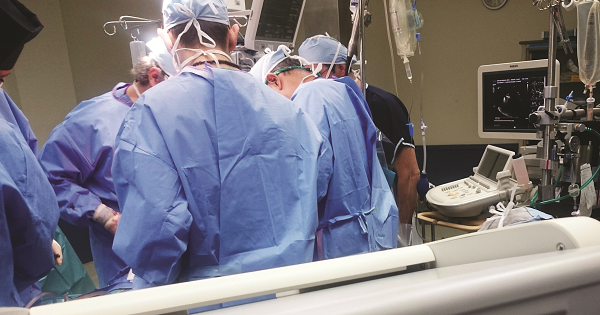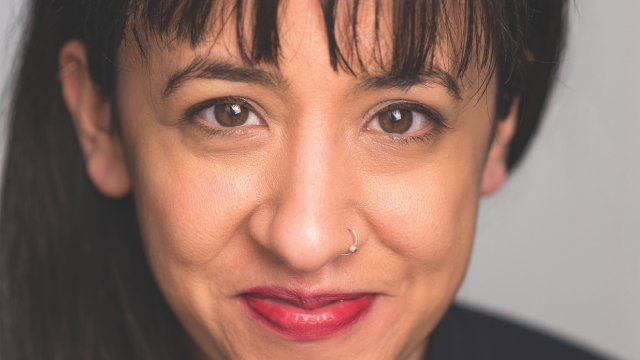-
QUALIFICATIONS
- For Linguists Worldwide
- For UK Public Services
- Preparation
- Policies & Regulation
-
MEMBERSHIP
- Join CIOL
- Membership grades
- NEW for Language Lovers
- Chartered Linguist
- Already a member?
- Professional conduct
- Business & Corporate Partners
-
ASSESSMENTS
- For Second Language Speakers
- English as a Second Language
-
EVENTS & TRAINING
- CPD, Webinars & Training
- CIOL Conference Season 2025
- Events & Networks
- CIOL Mentoring
-
NEWS & VOICES
- News & Voices
- CIOL eNews
- CIOL Awards
- The Linguist
- Jobs & Ads
-
RESOURCES
- For Translators & Interpreters
- For Universities & Students
- Standards & Norms
- CIOL & AI
- All Party Parliamentary Group
- In the UK
- UK Public Services
- Find-a-Linguist
A team in good health
By Romina Espinosa

Why in-house medical interpreting is better for our health
Medical interpreting is often done by freelancers, hired for one-off assignments, even if the patient has a chronic condition and/or needs several appointments and procedures. UC San Diego Health has an in-house team of six full-time English<>Spanish interpreters. Our consistent presence meets an interpersonal need that is often missing in the US healthcare system. Given San Diego’s proximity to the US-Mexico border (less than 20 miles away), there is a high demand for medical services in Spanish and the hospital offers free 24/7 interpreting. Freelancers are used for ASL (American Sign Language) and other languages on an ad-hoc basis.
Surgical oncologist Charles Coffey lists several advantages of working with a regular group of dedicated interpreters: patients become familiar with their interpreters and look forward to seeing them; this creates opportunities for relationship-building; and the presence of in-person interpreters can go a long way in bolstering patient trust and confidence in the medical team.
As interpreters, we feel privileged to be present for clients at some of their most vulnerable moments, and when we know that our employer values our expertise, it brings us purpose and fulfillment. Patients are grateful that every instance of good news – a cancer remission or a successful transplant – can be fully expressed.
Preparing for the unexpected
Humanity is at the centre of medical interpreting and the work brings us in close proximity to human suffering and mortality, and all the weight that carries. In the past seven years, I have been present at both outpatient and inpatient appointments, diabetes insulin administration tutorials, physical/occupational/speech therapy sessions, briefs on cancer treatment options, clinical trials and end-of-life discussions.
On a typical day, I can attend prescheduled appointments and complete rounds in different units. One moment I may be interpreting for a social worker educating a family about bone marrow transplants, using languages to explain graft-versus-host disease (injerto contra huésped), the next I may receive an alert that I am urgently needed in the ER.
The pace can change from placid waters to a turbulent sea of IV drips, ventilators, loud voices and the sound of a monitor indicating a heart has stopped beating. In that moment, I am the only linguistic and cultural link between a distraught woman holding her husband who has just died, and a chaplain reciting the Catholic prayer. I am there providing chuchotage interpretation as calmly as I can.
It is a fast-paced environment that does not often allow advance notice to prepare for meetings or appointments, but providers let us know the complexities of a particular situation in advance when they can. I read and do research about medical conditions. I keep my phone handy and sometimes use linguee.com to find an unknown term or phrase. Science keeps evolving; there are always new medications being approved and there is always something new to learn.
The work requires presence, empathy and precision. A misinterpreted word can mean the difference between life and death. The first time I interpreted during a lumbar puncture, the unfamiliar medical tools in the exam room triggered a fight-or-flight response for me. I had to learn to compose myself and focus on what was being said. The physician assistant performing the procedure wanted the patient to alert her to any numbness or tingling so she could stop and avoid nerve damage. I had to interpret words like ‘numb’ (adormecido) and ‘tingly’ (hormigueo) on the spot – there was no room for error.
Coping together
Medical interpreters maintain boundaries with patients and don’t develop personal relationships. This is part of our code of ethics, as outlined by the US National Council on Interpreting in Health Care. Nevertheless, it is difficult to forget patients we have seen so many times when they pass away. We do rounds with the palliative care team, we check in daily with patients who are terminally ill or recovering and ready to be discharged.
This is why I’ve acquired coping skills (e.g. meals with loved ones, physical exercise, time in nature). Debriefing with the medical team after a tough encounter is also a way to heal and not carry pain home. Being in-house enables us to access the free confidential and low-cost mental health resources that UC San Diego Health offers employees.
Teamwork is a key component, making us feel supported. Our interpreting department holds weekly huddles and monthly meetings. These are opportunities to discuss any issues or concerns. Our days are long and include back-to-back interpreting sessions. We may serve 4 to 13 patients a day – the time spent with each one primarily depends on the topic (e.g. consent for surgery, clinical trials, therapy or transplant education, quick follow-ups).
Most medical staff at outpatient clinics are used to working with interpreters, but in an academic research hospital, doctors are regularly shadowed by medical students who may not be. On one occasion, a new nurse did not understand that she should address the patient directly and told me: “Tell her I am going to take her blood pressure and give her the pain med.”
Explaining my role as an interpreter on a daily basis can be an exercise in diplomacy, but is necessary in providing high-quality, efficient services. I am a naturally diplomatic person and this strategy has always worked for me as an interpreter. I believe diplomacy creates opportunities and helps maintain a professional relationship with everyone.
In-person vs remote
As we provide a round-the-clock service, when an in-person interpreter is not available, remote video and phone sessions are offered. Poor connectivity, frozen screens and choppy phone audio can be frustrating for staff, who must continually pause and repeat themselves, or contact the hospital’s IT department for help. For patients with aphasia and other cognitive impairments (such as traumatic brain injuries), in-person interpreting is preferable.
Practitioners such as Dr Coffey pay special attention to their body language, and use tactile cueing and visual demonstrations. He may modify what he communicates to a patient by emphasising key words and using action prompts. These accommodations can be difficult to convey via a remote medium.
In-person interpretation offers an additional element of human connection. When multiple providers discuss in-depth medical information during an end-of-life discussion, for example, we are able to switch from consecutive to simultaneous interpreting to make these delicate conversations flow more smoothly.
Physical therapist Theresa Cermack adds, “For patients who may have a tracheostomy or endotracheal tube and are alert, aware and consistently attempting to communicate without sound over their interface, an in-person interpreter can be incredibly valuable in deciphering the patient’s needs through lip reading or in conjunction with communication boards that may be custom-created by our speech-language pathologists.”
Face-to-face sessions allow us to perceive body language that could be missed during remote interpretation. We are more likely to notice when a patient signals confusion by frowning, makes a bewildered expression or turns to look directly at relatives in the room for help with medical decisions. We can cultivate human connections and build rapport, making patients feel more comfortable asking questions. We often hear statements from patients and colleagues such as “You’re a lifesaver!” and “Can you just stay with me all day?”
Employee benefits
One benefit of working in-house is that I receive a regular, bi-weekly paycheck. When I worked full-time as a freelancer, I had to be very organised and keep track of the invoices I sent to various language agencies. I now work 40 hours a week in 8-hour shifts across 2 hospitals, with 2 paid 15-minute breaks and a 30-minute unpaid lunch break.
The main employee benefits include health insurance plans (including vision and dental), retirement plans, accrued paid time off (vacation, sick time), gym membership and tuition discounts. There are also green spaces and meditation rooms for us to use.
Communication plays a key role in our team. We help each other when changes in our daily schedules occur (e.g. cancellations, delays, additional time needed with a patient/ provider). It is a supportive environment and every day is different, which makes me want to come to work the next day!
Romina Espinosa is a Spanish-English interpreter, translator and creative writer based in San Diego. She has been offering her language services to direct clients and boutique language agencies since 2017, and also works as an in-house interpreter at UC San Diego Health.
Special thanks to Allison deFreese and Glenda Carelhue for reviewing initial drafts.
This article is reproduced from the Summer 2024 issue of The Linguist. Download the full edition here.
Filter by category
More
The Chartered Institute of Linguists (CIOL), Incorporated by Royal Charter, Registered in England and Wales Number RC 000808 and the IoL Educational Trust (IoLET), trading as CIOL Qualifications, Company limited by Guarantee, Registered in England and Wales Number 04297497 and Registered Charity Number 1090263. CIOL is a not-for-profit organisation.








